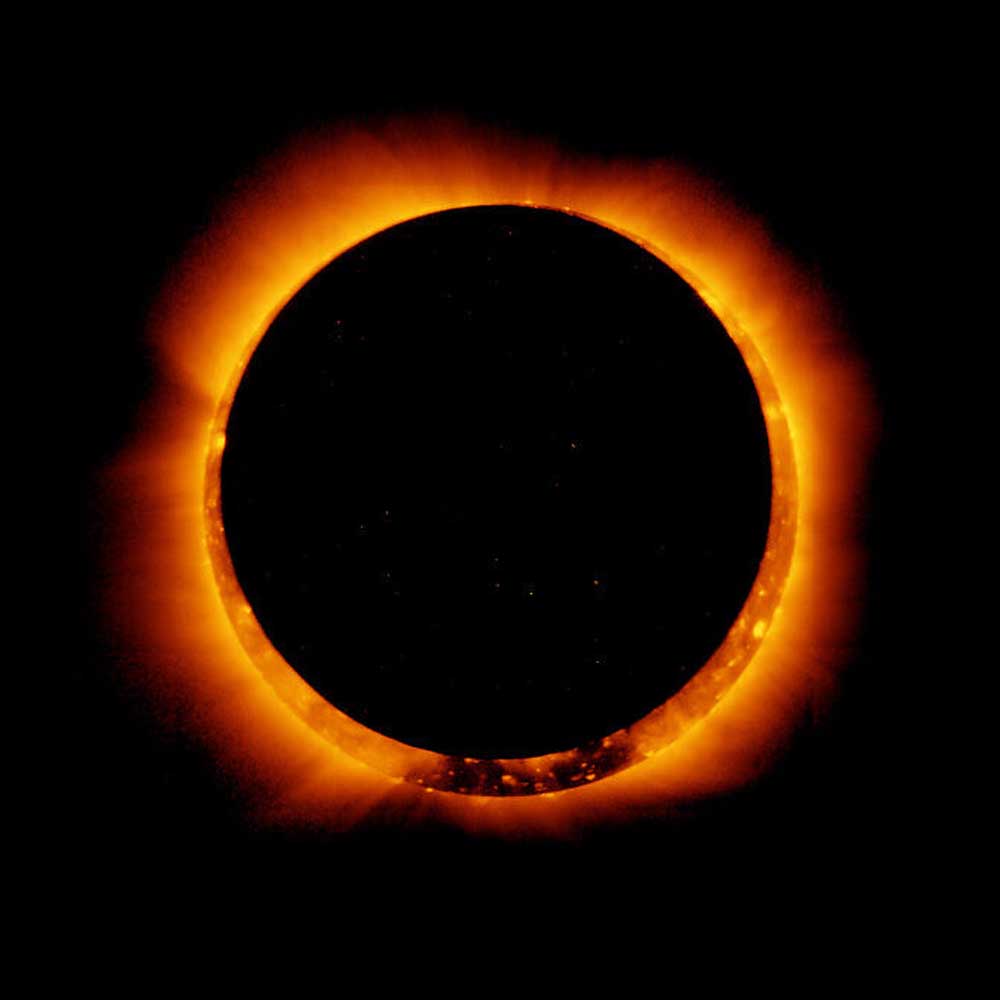‘Ring of fire’ annular solar eclipse visible in Central Oregon Oct. 14
Published 10:45 am Friday, October 6, 2023

- An annular solar eclipse creates a "ring of fire" around the Moon, similar to that seen in this image taken by JAXA/NASA Hinode spacecraft.
Central Oregonians will have a clear view of a “ring of fire” eclipse occurring the morning of Oct. 14.
Officially called an annular solar eclipse, it will occur when the moon covers nearly all of the sun around 9:15 a.m. for a few minutes in Sunriver, La Pine, and south to the California border. The eclipse’s visual effects will linger for nearly two hours as the moon moves in front of and then away from the sun.
The best viewing experience for the eclipse would be halfway between Sunriver and California, such as Chemult, Oregon, or Crater Lake National Park, said Paul Poncy, manager at the Sunriver Nature Center and Observatory.
Crater Lake National Park is expecting crowds for the eclipse, and Crater Lake Lodge is already fully booked for the event. Park officials advise having a plan for gas, parking, camping, lodging and the weather if planning a trip for the eclipse, according to the park website.
The eclipse’s path can be seen using NASA’s eclipse tool.
As the eclipse goes on, it will continue to be visible further south. In Sunriver and La Pine, the sun will be low to the southeast, and Poncy advised making sure the view is clear, without trees or other obstacles.
Though solar eclipses are fairly common, happening nearly every year, one hasn’t been visible in Oregon since the August 2017 total eclipse.
“It’s a great experience just with the eclipse glasses,” said Poncy. “You don’t need to do a lot to experience this and check out the beautiful occurrence that happens.”
Though the moon is between the Earth and the sun during new moons, solar eclipses don’t happen every month due to differences in the moon’s orbit compared to the Earth and sun.
The moon will be farther away from the Earth during the Oct. 14 eclipse compared to a total eclipse and will not totally cover the sun, which is how the annulus, or ring, occurs.
“This eclipse will never be safe to look at without equipment like eclipse glasses or the proper telescope filters,” Poncy said. “That’s a really big difference between the 2017 eclipse and the one next year.”
Eclipse glasses that are certified can still be safe to use, even if they were used in 2017. Solar filters for cameras and telescopes will also make the eclipse safe to look at, said Poncy.
Creating a pinhole camera is another way to ensure that the eclipse is safe to view.
“It projects the image on the back of the shoebox,” he said. “Another kind of cool affect is if you can find yourself in an area where sunlight’s coming through leaves of a tree, it acts like a pinhole camera, and it’ll project the little crescent suns and the eclipse shapes on the ground through the leaves.”
Looking at the eclipse directly will lead to eye damage, though in other eclipses, like the total eclipse in 2017 and the upcoming eclipse in April 2024, it is possible to remove eye protection for a few minutes safely, Poncy said.
During the eclipse, the sky may get dimmer. The temperature may drop as well, but the effect won’t be as strong as during a total eclipse, said Poncy.
The observatory is giving eclipse glasses to anyone who donates nonperishable food to the Care and Share food bank in Sunriver.






